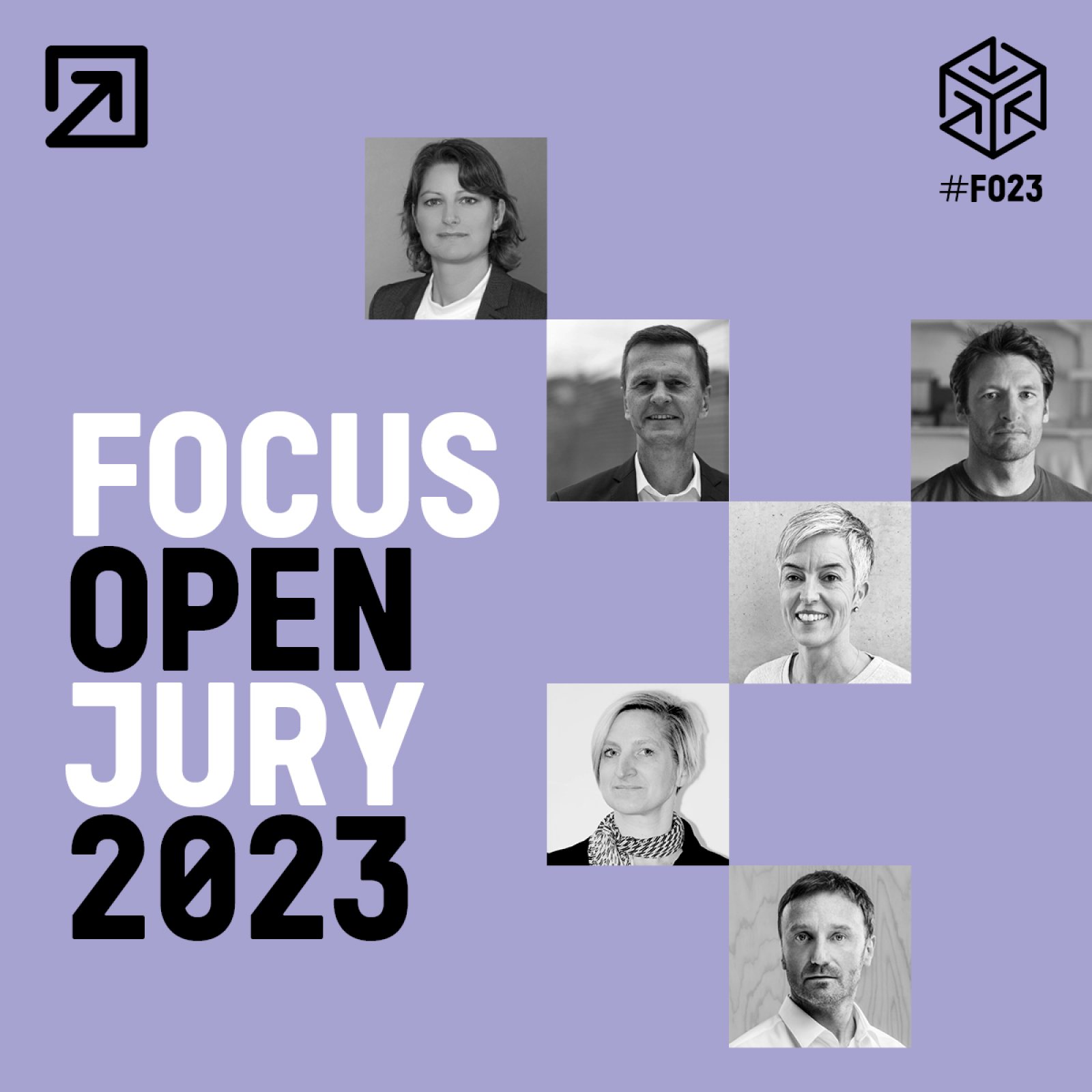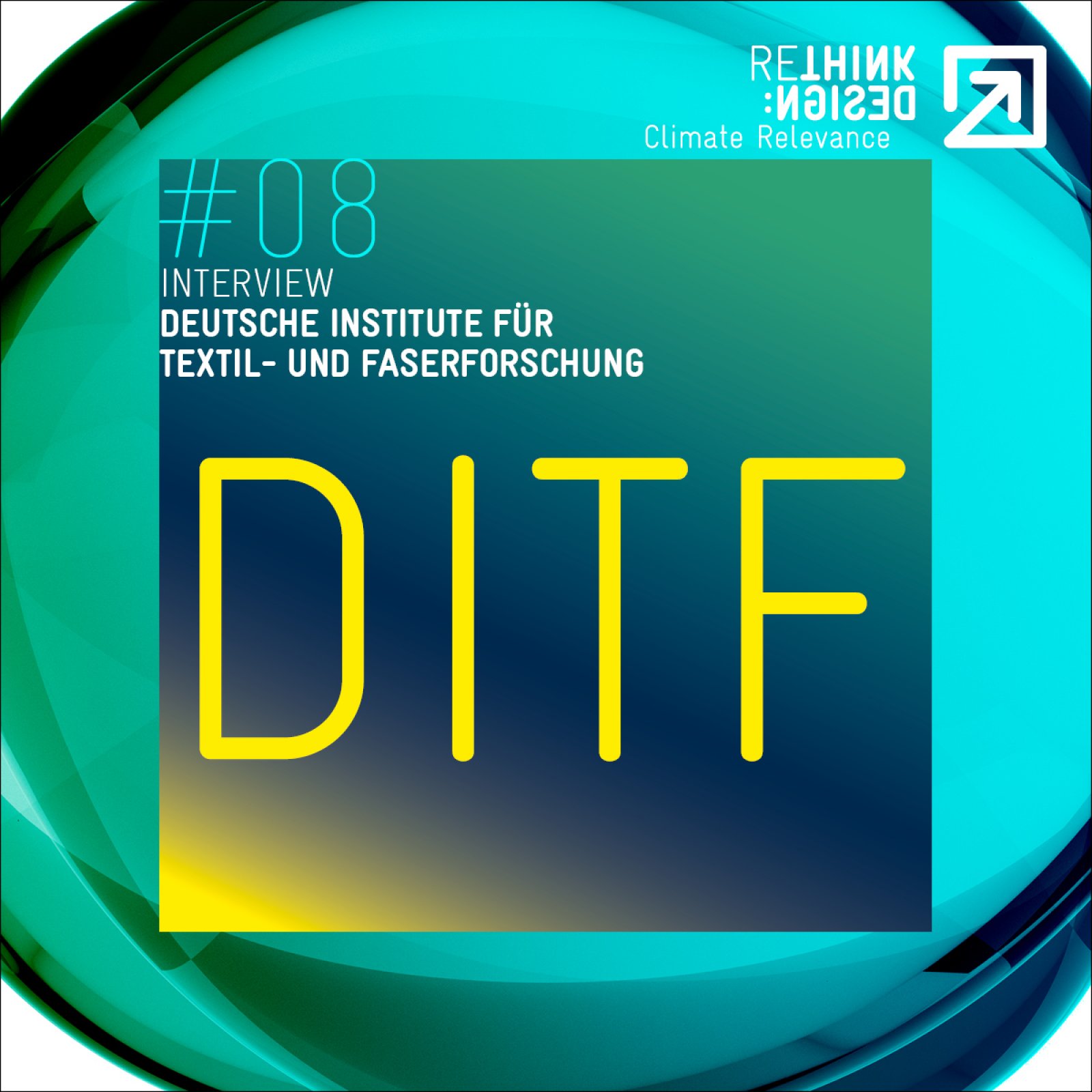Dear Readers,
It’s the end of April and spring is here, and we at the Design Center Baden-Württemberg hope the roundup of fresh and inspiring topics in this month’s issue of our newsletter will put a spring in your step as well!
First, we’re delighted to introduce you to this year’s jury for the Baden-Württemberg International Design Award FOCUS OPEN 2023. Once again, we’ve been lucky enough to find an excellent mix of specialists from various areas of the design sector to judge the entries.
There’s also a fascinating new interview in our RETHINK:DESIGN Climate Relevance series, our format dedicated to climate-friendly and forward-thinking design. This time we spoke to representatives of Europe’s biggest textile research centre – the German Institutes of Textile and Fiber Research (DITF).
Last but not least, we’ve got a very special exhibition tip for you: Staatsgalerie Stuttgart is showing the inspiring fashion photography of renowned US artist Cindy Sherman until 10 September this year.
Enjoy the read!
The Design Center Baden-Württemberg team
It’s the end of April and spring is here, and we at the Design Center Baden-Württemberg hope the roundup of fresh and inspiring topics in this month’s issue of our newsletter will put a spring in your step as well!
First, we’re delighted to introduce you to this year’s jury for the Baden-Württemberg International Design Award FOCUS OPEN 2023. Once again, we’ve been lucky enough to find an excellent mix of specialists from various areas of the design sector to judge the entries.
There’s also a fascinating new interview in our RETHINK:DESIGN Climate Relevance series, our format dedicated to climate-friendly and forward-thinking design. This time we spoke to representatives of Europe’s biggest textile research centre – the German Institutes of Textile and Fiber Research (DITF).
Last but not least, we’ve got a very special exhibition tip for you: Staatsgalerie Stuttgart is showing the inspiring fashion photography of renowned US artist Cindy Sherman until 10 September this year.
Enjoy the read!
The Design Center Baden-Württemberg team


BADEN-WÜRTTEMBERG INTERNATIONAL DESIGN AWARD
FOCUS OPEN 2023
WOW! Design our jury will love!
We’re overwhelmed by the incredible number of pioneering and inspiring design solutions that we’ve received to assess for FOCUS OPEN 2023. A big thank-you to all the entrants for their willingness to compete at international level!
Once again, the quality of the registered entries is outstanding! Our 2023 jury will be judging works submitted not just by established players but by ingenious newcomers and startups as well.
As is typical for FOCUS OPEN, virtually all the entries will be assessed on the basis of the actual physical product. And what’s more, they’ll be judged by top-notch experts!
As always, our jury is made up of renowned designers who will meet for a two-day judging session in May and make their decisions after meticulous and competent examination of all the products, services and forward-looking ideas that have been entered for the competition.
The experts on the FOCUS OPEN JURY for 2023 are:
Julian Appelius
Studio Julian Appelius
Berlin
Matthias Bohner
Solarmax GmbH
Burgau
Claudia S. Friedrich
Zweigrad Industrial Design
Hamburg
Linda Ruth Schmidt
VDID Verband Deutscher Industrie Designer e.V.
Berlin
Judith Tenzer
Einmaleins
Burgrieden bei Ulm
Mario Zeppetzauer
Formquadrat GmbH
Linz, Austria.
Find out more about the members of this year´s here.


RETHINK:DESIGN CLIMATE RELEVANCE
“10 trillion tonnes of cellulose!”
Interview with the German Institutes of Textile and Fiber Research (DITF)
The DITF in Denkendorf is a research centre that focuses on new bio-based materials. We spoke to Dr Frank Hermanutz and Dr Antje Ota about biopolymers, polyester and cellulose.
“Production capacities for polyester have never been as big as they are today,” says Dr Frank Hermanutz. He is head of the Competence Center Biopolymer Materials at the German Institutes of Textile and Fiber Research (DITF) in Denkendorf. And yet there are already biopolymers that neither end up as microplastics nor cause waste problems. “Biopolymers aren’t necessarily recyclable, but they are biodegradable,” says his deputy Dr Antje Ota.
Among other things, the DITF develops polymers for biopolymer fibres. What exactly are biopolymers?
Dr Frank Hermanutz:
According to the scientific definition, they’re polymers that grow in nature. That includes structural substances like cellulose, but also casings made of chitin, keratin, alginate or spider silk. By contrast, polylactides based on lactic acid aren’t biopolymers, they’re biogenic polymers because polylactic acid doesn’t occur in nature. Biogenic polymers like that can be biodegradable, but unfortunately some types aren’t. Nature has a fascinating variety of such substances waiting to be discovered, some of which are extremely specific. We actually have quite a big set of building blocks that we put to creative use here at the DITF.
Dr Antje Ota:
A polymer is basically a chemical compound made up of lots of similar or identical components called monomers. That’s the property that biopolymers and biogenic plastics like PLA have in common. But because a polymer only has to contain 50% biogenic material in order to be classified as biogenic, you always have to look very closely to be sure of what you’re getting. Even small amounts of petroleum-based additives can be a problem. But there are also additives from natural sources that deliver the corresponding functionalities.
Dr Frank Hermanutz: Synthetic additives are generally used for fire protection, for instance …
Curious? Click here to read the full interview.
“Production capacities for polyester have never been as big as they are today,” says Dr Frank Hermanutz. He is head of the Competence Center Biopolymer Materials at the German Institutes of Textile and Fiber Research (DITF) in Denkendorf. And yet there are already biopolymers that neither end up as microplastics nor cause waste problems. “Biopolymers aren’t necessarily recyclable, but they are biodegradable,” says his deputy Dr Antje Ota.
Among other things, the DITF develops polymers for biopolymer fibres. What exactly are biopolymers?
Dr Frank Hermanutz:
According to the scientific definition, they’re polymers that grow in nature. That includes structural substances like cellulose, but also casings made of chitin, keratin, alginate or spider silk. By contrast, polylactides based on lactic acid aren’t biopolymers, they’re biogenic polymers because polylactic acid doesn’t occur in nature. Biogenic polymers like that can be biodegradable, but unfortunately some types aren’t. Nature has a fascinating variety of such substances waiting to be discovered, some of which are extremely specific. We actually have quite a big set of building blocks that we put to creative use here at the DITF.
Dr Antje Ota:
A polymer is basically a chemical compound made up of lots of similar or identical components called monomers. That’s the property that biopolymers and biogenic plastics like PLA have in common. But because a polymer only has to contain 50% biogenic material in order to be classified as biogenic, you always have to look very closely to be sure of what you’re getting. Even small amounts of petroleum-based additives can be a problem. But there are also additives from natural sources that deliver the corresponding functionalities.
Dr Frank Hermanutz: Synthetic additives are generally used for fire protection, for instance …
Curious? Click here to read the full interview.


TIP
Cindy Sherman – Anti-Fashion
Exhibition at Staatsgalerie Stuttgart
21 April – 10 September 2023
For almost 50 years, the subject of fashion has been a constant in the work of US artist Cindy Sherman. The exhibition Anti-Fashion focuses on this close engagement with fashion and approaches her photographic oeuvre from a new perspective. In doing so, it sheds light on the interplay between art and fashion for Sherman uses her numerous commissions from magazines such as Vogue and Harper’s Bazaar as well as her close collaborations with renowned designers as a constant source of inspiration. Until today the artist continues to influence the aesthetics of the fashion world, creating essential impulses and inspiring a whole generation of photographers. Through the medium of photography, fashion and fine art have always been in dialogue – but Cindy Sherman goes further; she interrogates the system that supports fashion, its glossy surface and its dark underbelly. Her interest in the fashion world is marked by a subversive attitude towards all that it stands for. Thus, her photographs show characters that are anything but desirable and run counter to the conventions of haute couture and the prevalent notions of beauty. Last, but by no means least, the exhibition reveals the subject of fashion as the starting point for the artist’s critical investigation of gender, stereotypes, and age. The wide range of Sherman’s characters highlights the artificiality and changeability of identity, which – now more than ever – is shown to be selectable, (self-)constructed and fluid.
Find out more about the exhibition here.
